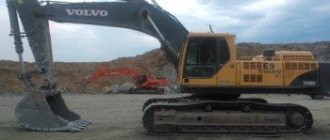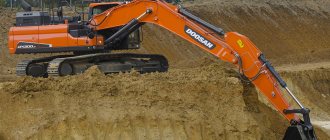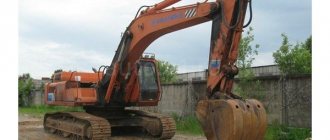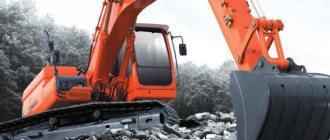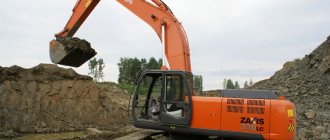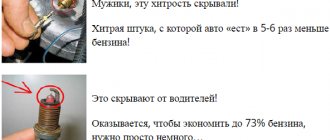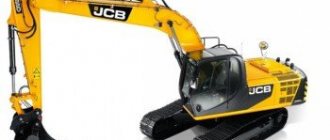The most popular excavator in the 22 tonne category is the JCB JS220, which it rightly deserves for its willingness to do hard work in both cold and hot weather. Reinforced components of the boom, chassis, and hydraulics are designed to operate under constant load around the clock.
The efficiency of this JCB JS220 excavator is due to the Dieselmax 448 engine with a power of 172 hp. The four-stroke, in-line four-cylinder, turbocharged, liquid-cooled, direct-injection diesel engine delivers at least 10% savings over competitors without loss of power. High torque at low speeds means maximum performance and minimum fuel consumption. Fuel consumption per hour is within ~ 8-9 liters. The 343 liter tank is enough for ~40 hours of continuous operation.
Application and characteristic features of the model
The JCB 220 excavator performs any volume of work to move soil, using it in any non-standard conditions - difficult terrain, steep slopes, sticky soil. The model can work effectively with a variety of attachments. In addition to buckets of different volumes and configurations, these are hydraulic hammers, grippers, and shears.
The JCB 220 is equipped with a quick-release carriage, which allows you to replace the excavator's working equipment in a short period of time. Thanks to this, during one work shift the operator will be able to perform several diverse tasks at once.
Special equipment of this model is often and successfully used in road construction, as well as for the demolition of dilapidated buildings; movement of soil of any category (including loose masses of frozen earth); work on dumps to move large volumes of soil and loose rocks.
Features of this model include:
- the ability to increase the power of a boom or other working body by increasing the pressure in the hydraulic system (there is a power reserve);
- the ability to replace hydraulic fluid much less frequently - thanks to the improved Plexus oil purification system;
- comfortable and ergonomically adjusted workplace with compact workflow controls;
- accessible location of all main components and assemblies, which simplifies their maintenance;
- automatic adjustment of unit power - depending on the current load;
- high level of security.
Excavator jcb 220 technical characteristics – Special equipment
An English company specializing in the production of heavy special equipment JCB (JC Bamford Excavators Ltd) currently occupies a leading position in the world market. Machines from this brand can often be found when performing various works in construction organizations. This company was founded on October 23, 1945 by 29-year-old Joseph Cyril Bamford.
Today, JCB has more than 18 factories that produce about 300 types of different machines. Throughout the existence of the company, the main emphasis has been the high quality of its products, versatility, reliability, as well as its high productivity.
The equipment is not at all afraid of working on soils with reduced bearing capacity and rather harsh operating conditions.
Delivery options (modifications)
On the special equipment market, JSB 220 excavators are presented in several modifications:
- in standard assemblies (JS or SC);
- with reduced chassis dimensions (NC);
- with extended chassis (LC);
- with narrow carriage (NLC)
Different modifications use different handle lengths. For the “NLC”, “LC” and “SC” versions it is 1.91, 2.4, 3.0 m, respectively.
When assembling JCB 220 excavators, Berco (track drive system), Kawasaki (pumps) and Kayaba (hydraulic valves) components are used.
Construction of the JSB 220 excavator
This model is based on a welded cross-shaped frame, which gives exceptional reliability and strength to the entire structure. All working parts are made of high quality steel. In those places where the loads are most significant, special reinforcements are provided.
The boom mechanism is reinforced along its entire length. Special metal partitions are welded into the cavity, which give the entire structure additional rigidity and strength. Particular attention should be paid to the fact that all elements of the boom are made of all-metal, welded together along the entire length of the contact of their edges.
The rotary platform of the JSB 220 excavator is installed on a load-bearing frame. The operator's cabin is located on the left side of the boom. The engine and hydraulic components are located behind the cab, behind the excavator operator.
The design of the turntable is box-shaped, which ensures good resistance to shock loads. The excavator tower is welded to both the upper and lower planes of the special vehicle chassis.
The balanced rotary mechanism and electronic-hydraulic braking of platform rotation ensure high speed and accuracy of work. The steps and platforms of excavators of this model are equipped with non-slip steel plates with perforations, which facilitate reliable adhesion of shoes to the surface even in rain and icy conditions.
The operator’s workplace is thought out down to the smallest detail: exceptionally comfortable conditions and high safety are created there for him. Hydraulic dampers are available on both the attachment and the boom. Thanks to these devices, dynamic loads on the metal are reduced and vibrations are minimized.
To make regular maintenance as convenient as possible, the hood of the excavator's engine compartment can be tilted using pneumatic cylinders. The radiator and intercooler are installed in the same plane to make them easier to clean from dirt.
The upper and lower rollers of the excavator chassis are heat-treated, sealed, and lubricated. The tracks are adjusted using lubricated cylinders. Track guide rollers are sealed, lubricated, with a shock-absorbing return spring.
Number of track guides and upper rollers: 2 on each side. The number of lower rollers is 7 on each side (8 on each side for the LC with an extended chassis). The number of links in the track shoe is 46 pieces on each side (49 pieces on each side for the LC).
If necessary, rubber pads can be mounted on the excavator tracks. They enable the excavator to work on asphalt and other sensitive substrates without damaging them.
The movement of the excavator on caterpillar tracks is completely hydrostatic, in a three-speed mode with automatic gear shifting. Travel motors are adjustable, axial piston type with an inclined disk, completely enclosed by the chassis frame. Final drive – planetary gearbox, bolted drive sprockets.
The service brakes are a hydraulic counterbalance valve to prevent overspeeding on inclined surfaces. The parking brake is an automatic spring disc type with a hydraulic release mechanism.
JCB 220 crawler excavator
The machine is designed for repairing and laying road surfaces under difficult working conditions. The JCB 220 crawler excavator belongs to the middle class of construction equipment and is characterized as a highly efficient and productive machine. These parameters are due to the high power of the power plant, which allows you to overcome soft ground and has high traction, capable of independently pulling the machine out of viscous soil.
JCB 220 crawler excavator
Return to navigation
Features and benefits
The excellent technical characteristics of the JCB 220, combined with a modern control system, advanced functions, a powerful power unit, and additional chassis protection, enable the excavator to cope with the following work:
- demolition of construction sites;
- development of soil of any category - from I to IV, including loosened frozen soil masses;
- moving large volumes of waste soil when working on dumps.
JCB 220 excavator. Photo
At the same time, work can be carried out of any complexity and in any conditions, including uneven foundations and slopes. In this case, it is necessary to carefully select attachments, among which the most popular are hydraulic hammers, buckets of various configurations and volumes, hydraulic shears, grabs, etc. To increase the speed of changing working equipment, a quick-release carriage is provided. Thanks to it, the operator can work with various organs during one work shift and perform work in accordance with its purpose.
The wide popularity of the JCB 220 crawler excavator is due to such advantages as ease of maintenance, high technical characteristics and the ability to use the machine in soft pliable soils and wetlands. Reliability, durability, versatility, the ability to work in difficult conditions, and efficiency in terms of maintenance, repairs and fuel consumption also play an important role. Consumers also note the following positive qualities compared to analogues:
- the breaking force of the boom and working element can be increased by increasing the pressure in the hydraulic system by 10%;
- the improved Plexus hydraulic oil cleaning system significantly increases its replacement intervals;
- ergonomic controls;
- availability of power reserve due to the possibility of increasing pressure in the hydraulic system;
- ease of maintenance due to the concentration of main components in accessible places;
- automatic power adjustment depending on the complexity of the work;
- availability of additional options – car radio, climate control, etc.;
- aesthetic appearance;
- increased security;
- comfortable interior space of the operator's cabin, adjustable seat.
Return to navigation
Technical characteristics and parameters
Regardless of weather conditions, the excavator moves large volumes of material, excavates excavations, and prepares the site for construction projects. At the same time, the technical characteristics of the JCB JS 220 excavator always correspond to the declared ones:
ParameterValue
| Operating weight | 22 t |
| Working radius | 10 m |
| Maximum digging depth | 6.5 m |
| Maximum unloading height | 8 m |
| Capacity of standard working body | 1.25 cu. m |
| Breakout force | 155 kN |
| Ground pressure | from 38 kPa to 52 kPa |
| Tipping load | 12.5 t |
| Maximum travel speed | 5.6 km/h |
Engine JSB 220
These excavators are equipped with power units of our own production, which have been produced under the JSB DIESELMAX brand since 2004. The four-stroke in-line four-cylinder diesel engine produces 173 horsepower (129 kW). It is equipped with turbocharging and direct injection. Its advantages include the fact that the engine produces high torque at only 1500–1600 rpm, creating high fuel efficiency by optimizing the power supply to the hydraulic components.
The composition of the exhaust gases of the JSB DIESELMAX engine meets the requirements of the international environmental standard Tier II. To reduce noise pollution from excessive air flow, the engine-driven cooling fan is equipped with a proportional control system that maintains the fan speed at the optimum level.
The working volume of the diesel engine is 4.8 liters. Type of cooling – liquid forced. The volume of the fuel tank is 343 liters. The engine oil system contains 20.4 liters of oil. The cooling system contains 25.5 liters of coolant.
The excavator's diesel fuel consumption can be controlled by selecting and switching operating modes: economical; auto mode (moving the excavator between objects, transporting and other types of its free movement); movement on slopes (uphill) and precision mode. Each of these modes is intended for certain types of work operations.
After starting the engine, the economy mode is automatically activated. The excavator operator can set his option manually when circumstances require it. Thanks to this solution, special equipment can save diesel fuel. In addition, the ability to recirculate oil in the hydraulic system, in addition to the working cylinders, also affects the efficiency of the excavator. This results in a reduction in cycle times.
With light loads on the hydraulic system and automatic operation, you can switch to idling operation of the power plant. In general, diesel fuel consumption by an excavator ranges from 7.5 to 9.5 liters per hour. It directly depends on the type of work and the degree of load.
The recalibration option allows the DIESELMAX engine to run on low-quality fuel without problems. This means that the excavator can be resold to other regions, thereby increasing their residual value.
Air filtration - dry air filter with auxiliary element and warning indicator in the cab.
Operating Parameters
Equipping the JCB JS220 with a high-torque power plant, high-performance oil pumps and a reinforced frame allowed the machine to achieve high efficiency.
The steel elements of the frame, boom, and handle are subjected to shot blasting and subsequent coating with protective substances to prevent metal corrosion. This allows the machine to be used for work in aggressive environments.
Table No. 1. Technical characteristics
| Parameter | Meaning |
| Engine | JCB DIESELMAX Tier II |
| Power, hp (kW) | 175 (128) |
| Speed, km/h | 5,8 |
| Ground clearance, mm | 486 |
| Maximum traction force, kN | 191,9 |
| Specific ground pressure, kPa | 34,3 |
| Noise level in the cabin, dBA | 72 |
| Platform rotation speed, rpm | 12,6 |
| Fuel tank volume, l | 340 |
Power unit
The excavator is equipped with a diesel engine produced by JCB DIESELMAX Tier II.
- It is a water-cooled inline-four engine with electronic fuel injection.
- Its design includes a turbocharger, an intermediate heat exchanger for incoming air and an oil cooler.
The last two are located in the same plane, which makes them easier to clean and maintain.
Additional Information! For economical fuel consumption, the engine management system provides an automatic return to idle speed if the hydraulic actuators are not engaged.
Table No. 2. Diesel parameters
| Name | Meaning |
| Crankshaft rotation speed, rpm | 2000 |
| Volume, l | 5,2 |
| Cylinder diameter/piston stroke, mm | 115/127 |
| Maximum torque, Nm | 560 |
| Exhaust gas toxicity standard | Tier 2 |
| Fuel consumption, l/h | 7,5-9,5 |
Chassis
The car is driven by hydraulic displacement motors located in the final drives. The running gear is represented by a cross-shaped welded frame, drive and idler sprockets, support rollers and caterpillar tracks.
The machine operator controls the machine with a servo drive, which directs the flow of working fluid to the hydraulic motors.
Hydraulic system
- To set the actuators in motion, the pressure of the working fluid is used. Two axial piston pumps with a total capacity of 448 l/min pump oil into the system.
- The pressure in the main pressure line is 34.3 MPa, it is limited by the bypass valve. Due to this pressure, greater breakout force is developed on earth-moving equipment.
- The operator controls the hydraulic system using spool valves with servo drives. The latter ensure smooth operation of the actuators and reduce the force exerted by the operator on the levers and joysticks.
- The hydraulic system itself is made of a regenerative type. Oil flows without pressure bypassing the cylinders, which reduces the duration of the production cycle, fuel consumption and lowers the temperature of the working fluid.
Hydraulic system
The regenerative hydraulic system provides for the possibility of idle circulation of the working fluid, which reduces the consumption of diesel fuel when the working parts of the excavator are idle. Additional hydraulic lines make the operation of the attachments smooth and precise. In order to increase the productivity and speed of movement of the excavator, optimal balancing of its rotary unit was performed. JCB 220 excavators are also equipped with electric or hydraulic rotary brakes.
Features of operation and maintenance
A new JCB 220 excavator requires its first maintenance after completing its first thousand hours of operation. At this stage, lubrication of the moving elements of the boom is required. In the future, these manipulations must be repeated at the same intervals. Boom and arm lubrication intervals have been extended to 1,000 hours using graphite-filled bronze bushings.
After 5 thousand hours of operation of the excavator, it needs to change the hydraulic oil. In the engine, the oil is changed, along with the oil filter, every 500 operating hours.
The air filter, which consists of two parts, is replaced when it becomes dirty. It is simple and does not take much time. There is no need to climb up to check the oil level as all routine maintenance is carried out directly from ground level. Centralized location of filters (engine oil, hydraulic oil and fuel) makes maintenance quick and easy.
Overall, JCB 220 excavators are very easy to maintain. This convenience is provided by:
- a hinged hood, which is equipped with pneumatic lifting cylinders;
- separate block arrangement of all the main systems of the special vehicle, oil and fuel filters;
- a monitor reporting all errors in the operation of the excavator systems.
JCB 220 excavators are equipped with a LiveLink tracking system, which makes it possible to determine the exact location of the special vehicle at any time. When the excavator's working units are inactive, the levers are automatically locked and the hydraulic system stops functioning. The power unit starts with the hydraulic system turned off and the control levers locked.
The JCB 2GO system completely turns off hydraulic functions to prevent unintentional movements of the heavy special vehicle. The updated start function allows the JCB 220 to be started in two separate steps when it is in the safe-locked position.
Attachments JSB 220
To perform a diverse type of work, the JCB 220 excavator must be equipped with attachments that correspond to its current tasks. This equipment is presented in the following range:
- buckets of standard type (with ESCO teeth), crushing (CB70), profiling type (with teeth 1500-2000 mm), for special types of work;
- buckets with teeth of various sizes and shapes, with a capacity from 0.4 to 1.25 m³;
- hydraulic hammers (HM1760Q or HM1570Q);
- hydraulic shears MP200;
- stone cutting head RW100N for working with granite;
- sorting gripper G700 for stacking and sorting;
- carriage for quick change of attachments.
The bucket rotates at an angle of 183 degrees, and its breakout force, which is developed by hydraulic cylinders, is 14.55 tf.
A large assortment of working equipment expands the scope of use of this special equipment, and this makes the excavator more in demand in various areas of production.
The new reinforced boom and arm of the JCB 220 excavator are made of high-strength steel, and the lower three-section boom plate with cast tips guarantees a long service life of the special vehicle. Modern high-tech production and assembly processes guarantee high precision and quality of all working components of the excavator.
Technical specifications in numbers (standard equipment)
- Operating weight – 22.5 tons.
- Working radius – 10 meters.
- The maximum digging depth is 6.5 meters.
- The maximum unloading height is 8 meters.
- The volume of a standard working bucket is 1.15 cubic meters.
- Breakout force – 155 kN.
- Ground pressure – from 38 kPa to 52 kPa.
- Tipping load – 12.5 tons.
- Platform rotation speed – 12.9 rpm.
- The maximum speed of the special vehicle is 5.6 km/h.
- Climbability – 70% (35°).
- The highest flow rate of hydraulic fluid in the system is 448 l/min.
- Overall dimensions: height (transport, with monoboom) – 3070 mm, cabin height – 2,996 mm; width – 2900 mm (without working parts), or 3300 mm (with equipment); turntable width (top) – 2,548 mm; The total length of the excavator is 9584 mm.
- Base size – 3370 mm; track width - 4,460 mm.
- The width of the tracks is 500 mm. It is possible to use a wider caterpillar belt – 900 mm wide.
- Ground clearance – 503 mm.
JCB JS 220LC: technical specifications, review, description
Photo source: jcb.comPhoto JCB JS 220LC
Modifications
The basic version of the model under consideration is the JCB JS 220. In addition to the modification with the LC prefix (with a long chassis), NLC (narrow carriage) excavators are also available to customers.
Technical specifications JCB JS 220LC
When assembling JCB JS 220LC excavators, as well as other available modifications, components from Berco (track drive system), Kawasaki (pumps) and Kayaba (hydraulic valves) are used.
The undercarriage has a fully welded X-frame, which provides the strength required in difficult operating conditions. The design of the turntable is, in turn, box-shaped, which ensures good resistance to shock loads. An interesting solution is that the excavator tower is welded to both the upper and lower planes of the chassis.
Photo source: jcb.comDepending on the configuration, the weight of the JCB JS 220LC is 21.9-22.5 tons
Rubber pads can be installed on the tracks. In this case, the excavator can be operated on sensitive substrates, such as asphalt, since the risk of damage to the surface is eliminated.
| Ground pressure | 0.32-0.46 kg/cm |
| Fuel tank | 343 l |
| Platform turning speed | 12.9 rpm |
| Maximum flow (hydraulic) | 448 l/min |
Weight, bucket volume
The weight of the excavator (in the configuration that includes the installation of a 1.14 cubic meter bucket and a 2.4 m long handle) is 21,904 - 22,490 kg. Values vary depending on tracks installed.
Engine
The machines are equipped with an engine developed by JCB specialists. The DIESELMAX line of diesel engines first became available on the market in 2004.
Photo source: jcb.comPhoto JCB JS 220LC
The engines equipped with the JCB JS 220LC develop high torque already at 1500–1600 rpm. This optimizes the fuel supply to the hydraulic components, which means increased fuel efficiency. The automatic idle mode function serves the same purpose: in cases where the hydraulic system is not in use, the engine speed is automatically reduced.
The power of the power unit is 129 kW.
Cabin, work equipment
To increase the service life of the boom, a three-section plate with cast tips is installed in its lower part.
For the JS line of excavators, specialists from the English company have developed a special quick-release carriage that allows you to replace attachments in the shortest possible time. A wide range of optional hydraulic lines are available, including a hammer model and a low flow option.
The hydraulic system was also designed by JCB and is regenerative. This type of hydraulic system ensures oil recirculation bypassing the cylinders. As a result, the full operating cycle is shortened and fuel is consumed more economically.
Photo source: jcb.comThe JCB JS 220LC excavator is equipped with a proprietary engine
The cockpit has a 3.5-inch color display that displays all the main indicators. The cooling fan is equipped with a proportional control system. Its function is to maintain optimal fan speed. An important indicator is the noise level: inside the cabin it is 72 dB (A), outside - 103 dB (A). A two-mode climate control system is available upon request: either fresh air or air circulated in the system can be used.
Let's say a few words about solutions that improve visibility. Firstly, the windshield is split in a 70/30 ratio, and secondly, a hood with a low line is used.
For convenience, the joystick has a button to turn on the mode of short-term increase in hydraulic power.
Dimensions JCB JS 220LC
| Overall length of undercarriage | 3 660 mm |
| Track width | 4,460 mm |
| Transport length with monoboom | 9,584 mm |
| Transport height with monoboom | 3,070 mm |
| Turntable width (top) | 2,548 mm |
| Cabin height | 2,996 mm |
| Ground clearance | 503 mm |
Maintenance
The two-element design of the air filter simplifies the cleaning process. Filters (engine oil, hydraulic oil and fuel) are centrally located. The engine radiator, hydraulic cooling system and intercooler are mounted close to each other. All this also helps make maintenance easier.
The service intervals are as follows: engine oil and oil filter are changed every 500 operating hours; the hydraulic oil filter - after 1,000 operating hours, and the oil itself - after 5,000 operating hours.
Analogs
Among the models similar in their capabilities are: JCB 8080, Liebherr R 920 Compact Litronic, Hyundai R 220LC-9S, Doosan / Daewoo DX225LC, Doosan / Daewoo DH220LC, Volvo EC210LC, Liebherr R 904 C Litronic, Hyundai R 210NLC-7, Hyundai R 210NLC-7A, Hyundai R 210NLC-9S.
from the TMPFM channel
Source: https://exkavator.ru/excapedia/technic/jcb_js220_lc
Operator's cabin
The JCB 220 excavator cabin is distinguished by spacious interior space and the ability to adjust the workplace for each specific operator. It is installed on a platform on six rubberized cushions.
The workplace is equipped with a ROPS safety frame – protection against the excavator tipping over. In addition, on special fasteners, in optional mode, a FOPS system can also be installed, designed to protect the operator’s cabin from heavy objects falling onto it from a height. Standard mounting brackets are available for this purpose.
As standard, the JCB 220 excavator cabin is equipped with a heating system, which has a special unit for heating the viewing windows, which prevents them from fogging up in the cold season. The operator's seat is equipped with a comfortable air suspension, and all control levers are located nearby, on the sides of it.
In the JCB 220 model, the AMS function was implemented. This is an information system that, through a special display, provides the excavator operator with operational information about the main technical indicators of the working units and mechanisms of the special vehicle.
The windshield of the excavator cabin is made according to the 70/30 split principle, which provides the greatest possible viewing angle. The operator can clearly see everything on the sides of the machine, including the right track. This gives him the opportunity to fully control the movement of the special vehicle and increases confidence when performing maneuvers.
Excellent visibility to the front of the right track significantly improves safety and makes trenching and maneuvering easier. And the innovative hood with a low line provides excellent visibility to the rear, too.
A special 3.5-inch monitor displays the current situation behind the excavator. For convenience, there is a special button on the joystick to turn on the mode of short-term increase in hydraulic power.
The multi-function color display provides instantaneous performance information and allows you to customize the home screen with clear readout in any lighting conditions.
The roof of the JCB 220 cab is made of durable laminated glass. A full set of mirrors – side and rear view – can be optionally installed on the excavator cab to create ideal all-round visibility and further increase the level of safety. Optional flashing beacons enhance operator safety on the job site.
Behind the excavator operator’s seat there is a fairly large compartment designed to store any personal items. This helps to optimally organize the internal work space.
Due to the fact that the JCB 220 cabin is installed on rubberized supports, the vibration load on the excavator operator’s workplace is significantly reduced. For the comfort of the excavator operator, the working pedals are made of a convenient large size and have good grip.
The noise level inside the cabin is 72 dB(A), outside - 103 dB(A). A dual-mode climate control system is available only as an additional order and at an additional cost, respectively.
The cost of the JSB 220 excavator and its analogues on the special equipment market
A new excavator of this model costs about 80 thousand dollars. The price may vary depending on the modification and configuration of the special vehicle. A used JCB 220 model excavator can be purchased on the secondary market for special equipment at a price half that of a new one. If the technical condition of the JCB 220 is close to new, then for such a special vehicle they ask on the secondary market for 75-85% of the cost of a new one.
Excavators Doosan / Daewoo DH220LC, Volvo EC210LC, Liebherr R 904 C Litronic, Hyundai R 210NLC-7, Hitachi ZX 200 and Caterpillar 320 DL have similar operating parameters.
In general, the JCB 220 model excavators are versatile mid-class tracked special vehicles with a wide range of attachments that allow them to perform a wide variety of tasks. Movements while simultaneously performing excavation work are carried out quickly and smoothly. JCB 220 excavators have a strong and stable working platform. All this reduces cycle time.
Crawler excavator JCB 220 technical specifications and description
An English company specializing in the production of heavy special equipment JCB (JC Bamford Excavators Ltd) currently occupies a leading position in the world market. Machines from this brand can often be found when performing various works in construction organizations. This company was founded on October 23, 1945 by 29-year-old Joseph Cyril Bamford.
Today, JCB has more than 18 factories that produce about 300 types of different machines. Throughout the existence of the company, the main emphasis has been the high quality of its products, versatility, reliability, as well as its high productivity.
The equipment is not at all afraid of working on soils with reduced bearing capacity and rather harsh operating conditions.
Description and features
One of the most popular models is the JCB 220 excavator, which uses a tracked chassis. This model was originally developed to perform road construction work in difficult conditions, but in reality the equipment can cope with a lot of other different jobs. This excavator is a representative of the middle weight category.
